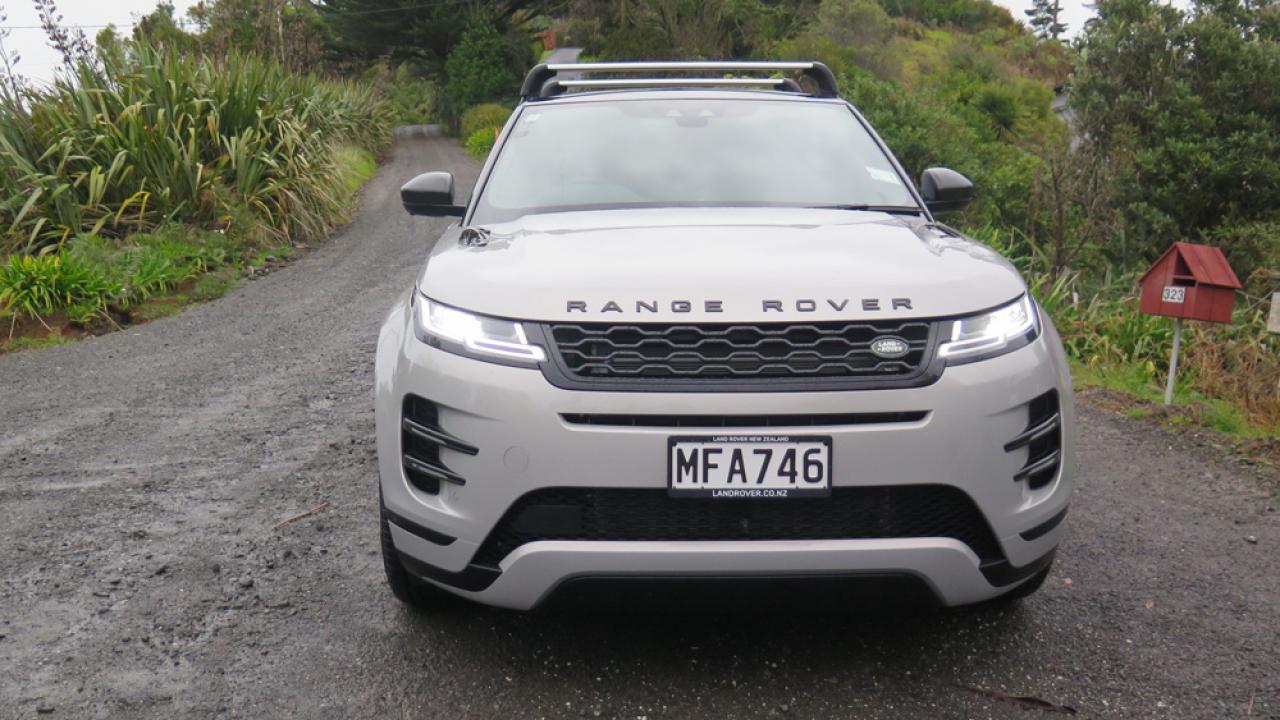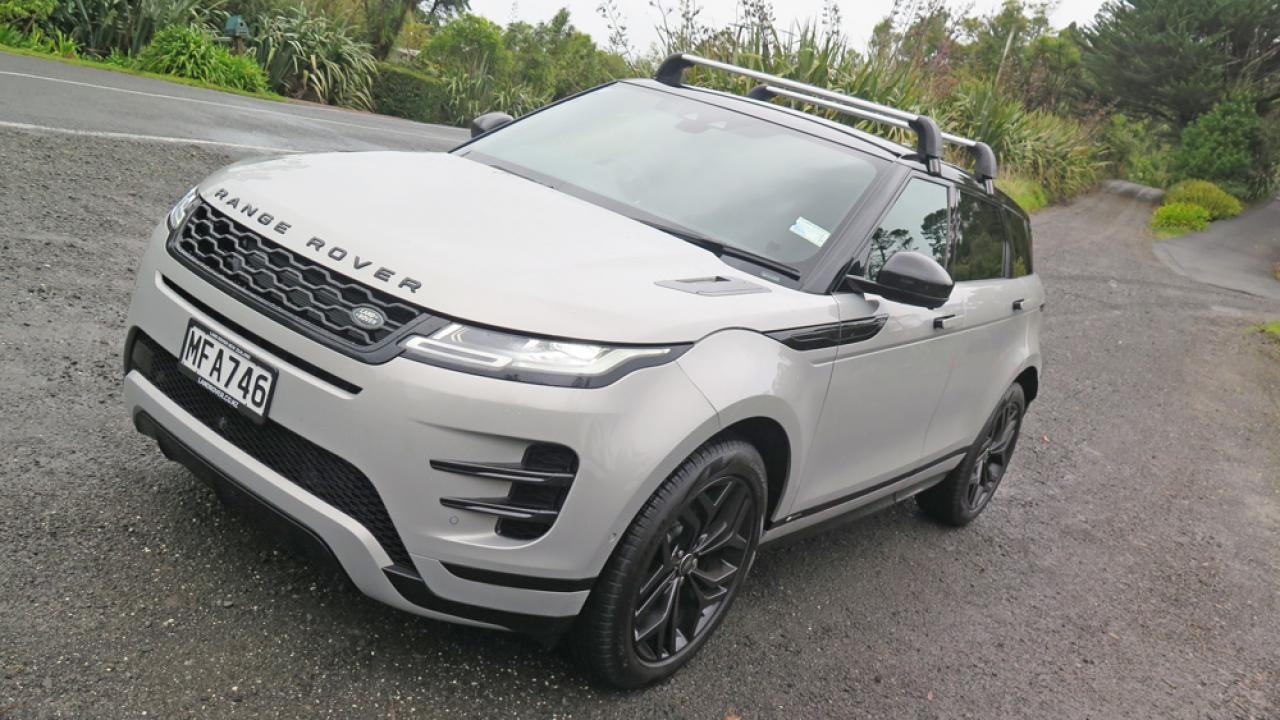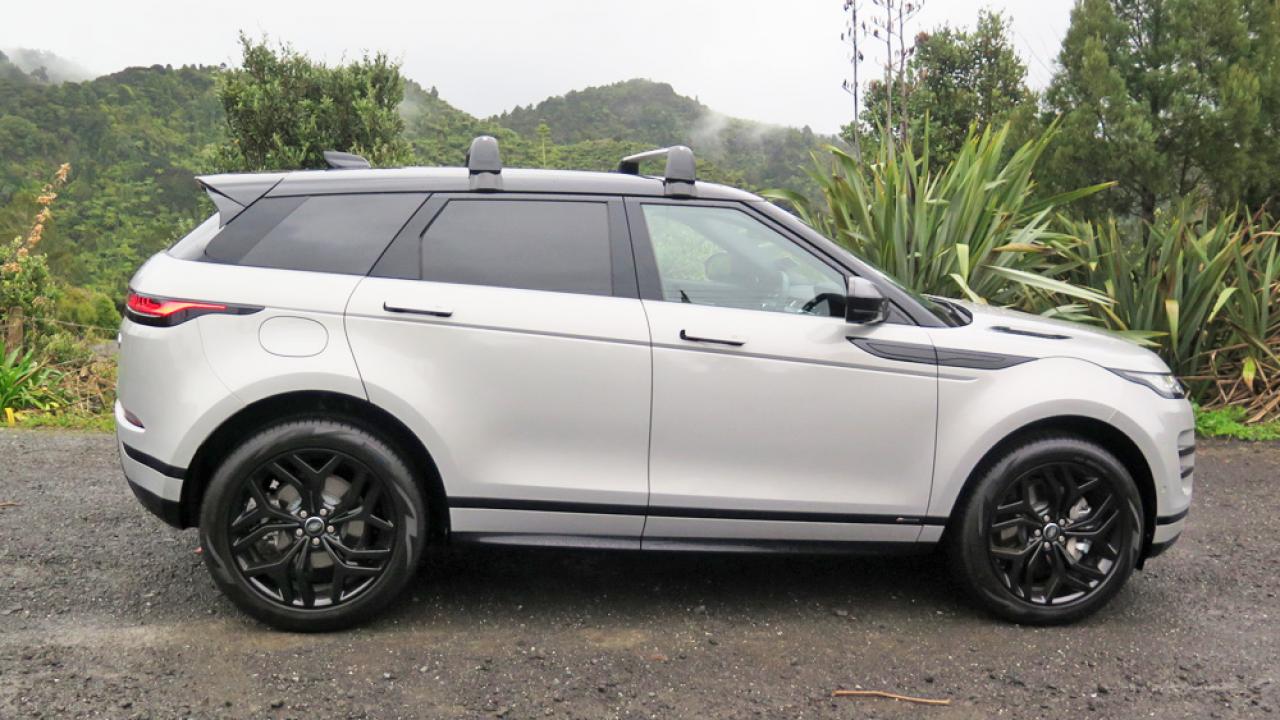It certainly followed the otherwise luxurious ethos, but was obviously produced with city slickers in mind – or if you’re unkind, British soccer WAGs. The gossip wasn’t helped when Victoria Beckham was asked to come up with a few embellishments.
Nevertheless the Evoque flourished – as did a few of Vicky’s ideas in association with it, and so here we have an update, with a rich features list for our market.
It sits on a new platform, and though width is up 4mm and length just one, wheelbase is longer to release more room inside – even the glovebox will carry more including, it claims, tablets and handbags.
The design isn’t quite as out there as the first Evoque, though the lines remain sleekly dynamic thanks in part to a lower roof than the original, and of course it’s still immediately identifiable as a Range Rover. This black pack certainly looked great, while inside the cabin feels and looks premium, without being fussy, despite having three screens to work from – the digital instrument display, a digital screen above the temperature dials, which doubled as controls for other amenities depending on what you’d selected, and above that the new Touch Pro Duo info and entertainment screen.
Once we’ll trolled through the menus we found it easy to use. Local tech-head testers complained it was a little slow to respond, especially now there’s Apple CarPlay and Android Auto to handle. Our tester didn’t note an unreasonable delay in response, that said, their attitude to cell phone use in the car stresses voice operation, and the minimum of fuss: mirroring your phone inside the car could arguably add a distraction to the already busy driving task.
One novel item we did enjoy was the rear-view mirror, which either works as standard – though vision out is rather like looking out through a mailbox – or via a rear-view camera which is crystal clear, and offers a 50-degree field of view behind you. The only oddity is that since the camera is in the roof-mounted ‘shark’ radio aerial you can’t see the rear window, so rear wiper action is invisible to occupants. You can also use Ground View to look at a 180-degree view under the front, when you’re off road, climbing kerbs or manoeuvring in tight parking spaces.
Speaking of off-road, without another vehicle – and taking into account the sodden ground and road-focussed tyres, we didn’t take it further than the gravel, though found the terrain responses’ auto function effective for climbing steep, wet gravel slopes.
The nine-speed auto worked well alongside this engine, it’s a great cruiser, though if it’s performance you’re after, the weight does work against the engine if you expect emphatic acceleration from higher speeds, or up hill.
The on-road ride was comfy – this is a quiet, refined car to be in, supple over munted surfaces and able to make smaller lumps and ripples simply disappear between road surface and seat.
You might think anything in the Range Rover stable – given a history of rugged Land Rover work horses behind it – would tow almost anything. But this petrol variant is limited to 1800kg braked. If you want more, you buy the diesel to take it to 2000kg.
This HSE version is termed a mild hybrid, and includes 48-volt tech designed to save fuel, not by boosting the engine that drives the wheels, but to regenerate power (for example during deceleration) to help run ancillaries. If you apply the brakes at under 17km/h it’ll also switch off the engine .
Range Rovers’ fuel claim looks generous, but apparently significant testing was done under a previous regimen, while Euro WLTP testing returned 9.1l/100km, which was closer to the figure we achieved for our stint behind the wheel, with this engine hauling the relatively heavy body up, down and over the Waitakere ranges more than it cruised open highways.
The entry-level Evoque starts at $92,900, with this mild hybrid HSE topping the range at $117,900. But it’s very easy to add to that by ticking some of the vast array of cost options, and our tester had added black paint to the roof ($1000), the Black Pack ($1600), configurable ambient lighting ($450), privacy glass ($700), 16-way heated electric memory front seats ($1300, base model seats are 10-way electric heated), a rubber boot liner ($402), roof rails ($2323) and cross bars ($755).
One assumes that if you’re already spending over 100K on your car, you’re not worried about a few extras, but we’re not sure the add-on items equated to good value for the additional price.
Even without them this Evoque feels like a luxury vehicle, and one with more presence than expected even at this price. There are other premium SUVs in the bracket – think Jaguar E-Pace – which undercut it. The Evoque fights back with its more premium feel and extended spec list, making a reasonable argument that it’s still a good option if you balance those attributes into the value equation, even without considering that it retains a fair bit of off-road capability.
|
At a glance |
|
|
Models |
Range Rover Evoque R-Dynamic HSE |
|
Engine |
2.0-litre petrol turbo mild hybrid |
|
Price |
$117,900 ($126,430 test inc. cost options) |
|
ANCAP safety rating |
5 |
|
Power and Torque |
221kW at 5500rpm, 400Nm torque at 1500-4500rpm |
|
Transmission |
Nine-speed auto |
|
Fuel economy |
8.1l/100km |
|
Towing capacity |
1800kg |
|
2WD/4WD/AWD |
AWD |
|
Seating capacity |
5 |
|
Luggage capacity/payload |
472 litres (all seats up), 1156 litres (second row folded) |
Safety systems
- Blind spot assist
- Intelligent Emergency Braking
- Auto headlights
- Trailer Stability Assist
- Roll Stability Control
- 360-degree parking aid and Reverse Traffic Detection with surround camera and Park Assist
- Advanced Tow Assist, Wade assist
- Tyre pressure monitoring system








